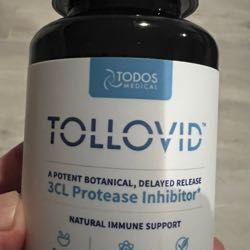MANF Therapeutics Announces Positive MANF Pre-Clin
Post# of 30082
Download as PDF
JULY 09, 2018
NEW YORK, July 09, 2018 (GLOBE NEWSWIRE) -- via OTC PR WIRE -- MANF Therapeutics, Inc., a wholly-owned subsidiary of Amarantus Bioscience Holdings, Inc. (OTCPK:AMBS) in pre-clinical development advancing the orphan-drug designated therapeutic protein mesencephalic astrocyte-derived neurotrophic factor (MANF) as a disease-modifying treatment for orphan ophthalmological conditions, Glaucoma and Parkinson's disease, today announced the publication of a scientific article entitled "MANF protects dopamine neurons and locomotion defects from a human alpha-synuclein induced Parkinson's disease model in C. elegans by regulating ER stress and autophagy pathways" in the peer-reviewed journal Experimental Neurobiology. The authors are researchers at Tongji University School of Medicine and Tongji University's School of Life Science and Technology.
A gene therapy approach to express MANF was used in the C. elegans Parkinson's disease (PD) model of human alpha-synuclein. Alpha-synuclein is a protein that is mis-folded and aggregates in PD, potentially driving disease progression. The data demonstrated that MANF restores locomotory ability in the disease model, as well as restoring morphology and function of the dopaminergic (DA) neurons. Taken together with previous data demonstrating MANF's ability to regenerate DA neurons by restoring morphological and chemical imbalances in neurotoxin-based animal models of Parkinson's disease, MANF represents a potential disease-modifying treatment for patients based on its unique mechanism of action. Previously reported pre-clinical studies have demonstrated the ability to precisely deliver MANF protein to the brain areas associated with Parkinson's disease via convection-enhanced delivery (CED).
MANF Therapeutics is preparing to restart IND-enabling development of MANF in 2018. MANF has therapeutic potential across multiple orphan ophthalmological conditions such as RAO and retinitis pigmentosa, where MANF has already received orphan drug designations from the FDA, as well as in larger indications such as Glaucoma, Parkinson's disease, diabetes and cardiovascular disease, including stroke and myocardial infarction. MANF Therapeutics is the front-runner and primary worldwide intellectual property (IP) holder for MANF-based therapies including protein therapy, gene therapy and cell therapy. The Company owns rights to composition of matter patents and patent applications for MANF and owns, or has licenses to, method of use patents and patent applications covering the use of MANF in ophthalmology, neurology and diabetes.
Citation: Experimental Neurology, Volume 308, October 2018, Pages 59-71
Highlights
The degeneration of DA neurons occurs before locomotion defects in C. elegans, MANF rescues DA neural degeneration and locomotion defects during all the period of PD progression.
MANF reduces the aggregation of -synuclein, restores dopamine levels and rescues the function of DA neurons in the -synuclein C. elegans model of PD.
ER stress and autophagy pathways are involved in MANF-mediated neuroprotection.
ABSTRACT
Many studies have demonstrated that mesencephalic astrocyte-derived neurotrophic factor (MANF) has been shown protective effects on neurotoxin-based models of Parkinson's disease (PD). It still remains unclear whether MANF can rescue dopaminergic (DA) neurons in an alpha-synuclein model. Glial cell line-derived neurotrophic factor (GDNF) and its related neurturin (NRTN) can protect DA neurons in the neurotoxin but not alpha-synuclein animal models of PD, it failed in the clinical trials. Since alpha-synuclein model can better mimic the progression of human PD, in our study we overexpressed MANF specifically in DA neurons by using an alpha-synuclein Caenorhabditis elegans (C. elegans) model. Our results showed MANF alleviated progressive neuronal degeneration and prevented locomotion defects. Indeed, MANF can protect cilia of DA neurons at an early stage, suggested that MANF participated in the whole process of neuronal degeneration. Furthermore, we found MANF facilitated the removal of misfolded alpha-synuclein proteins and rescued the function of damaged DA neurons. By using RNAi approach, we inhibited ER stress and autophagy related genes and effects of MANF were decreased, which demonstrated ER stress and autophagy pathways were involved in the MANF-mediated neuroprotection. Our study suggests MANF exhibits potential as a neuroprotective agent for PD therapy.
About Parkinson's Disease
Parkinson's disease (PD) is a chronic, progressive neurodegenerative disorder that causes motor symptoms such as tremors, rigidity and slowed movements as well as non-motor symptoms including cognitive impairment, mood disorders and autonomic dysfunction. The Parkinson's Disease Foundation estimates that there are approximately one million people living with Parkinson's disease in the United States and seven to 10 million PD patients worldwide. The most commonly prescribed treatments for Parkinson's disease are levodopa-based therapies. In the body, levodopa is converted to dopamine to replace the dopamine loss caused by the disease. As dopamine neurons in the brain are lost, the therapeutic efficacy of levodopa attenuates and patients are left with limited treatment options. A therapy that could fundamentally alter the rate of decline, or potentially regenerate, declining dopaminergic neurons would represent a major medical breakthrough in the management of patients with Parkinson's disease.
 (6)
(6) (0)
(0)